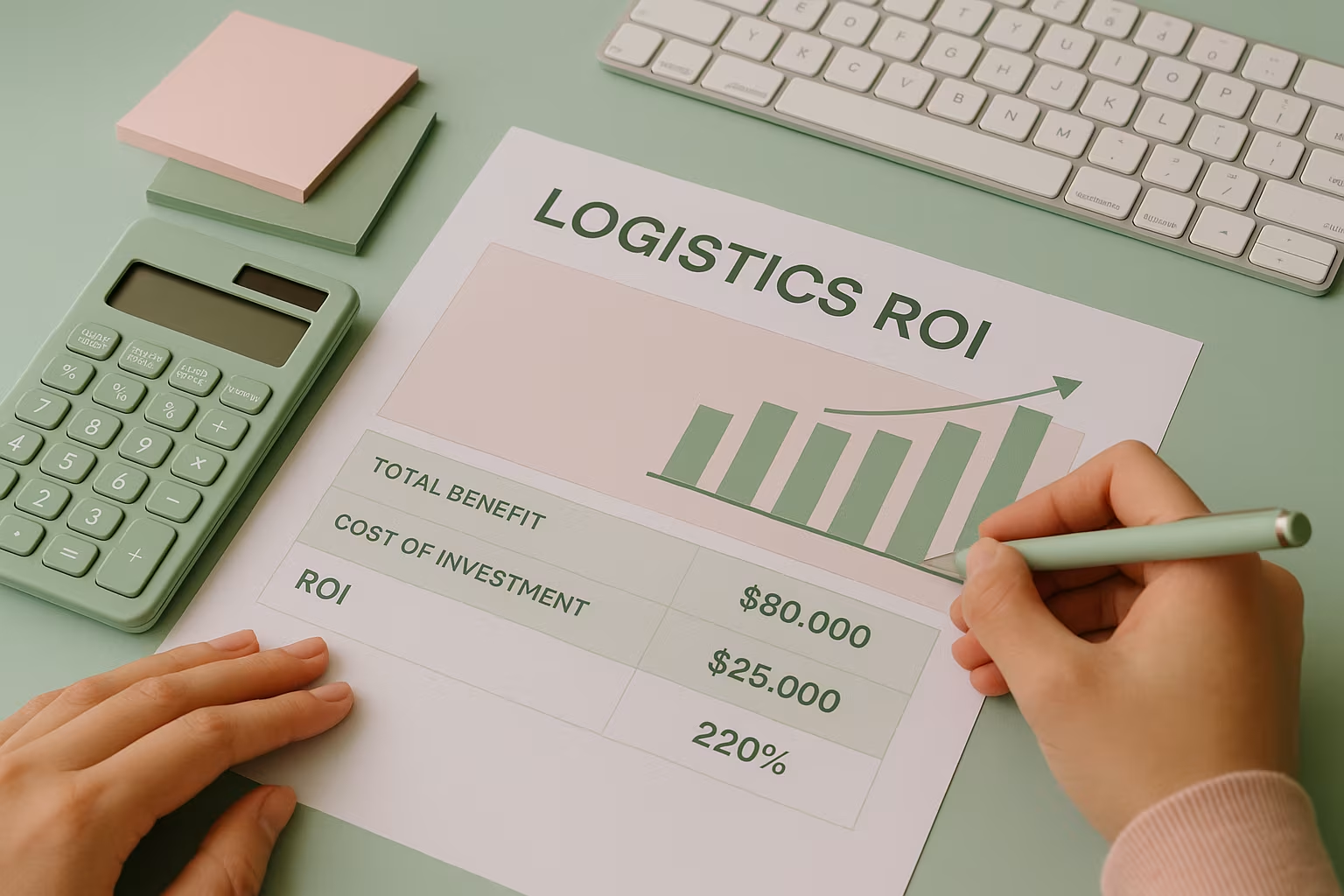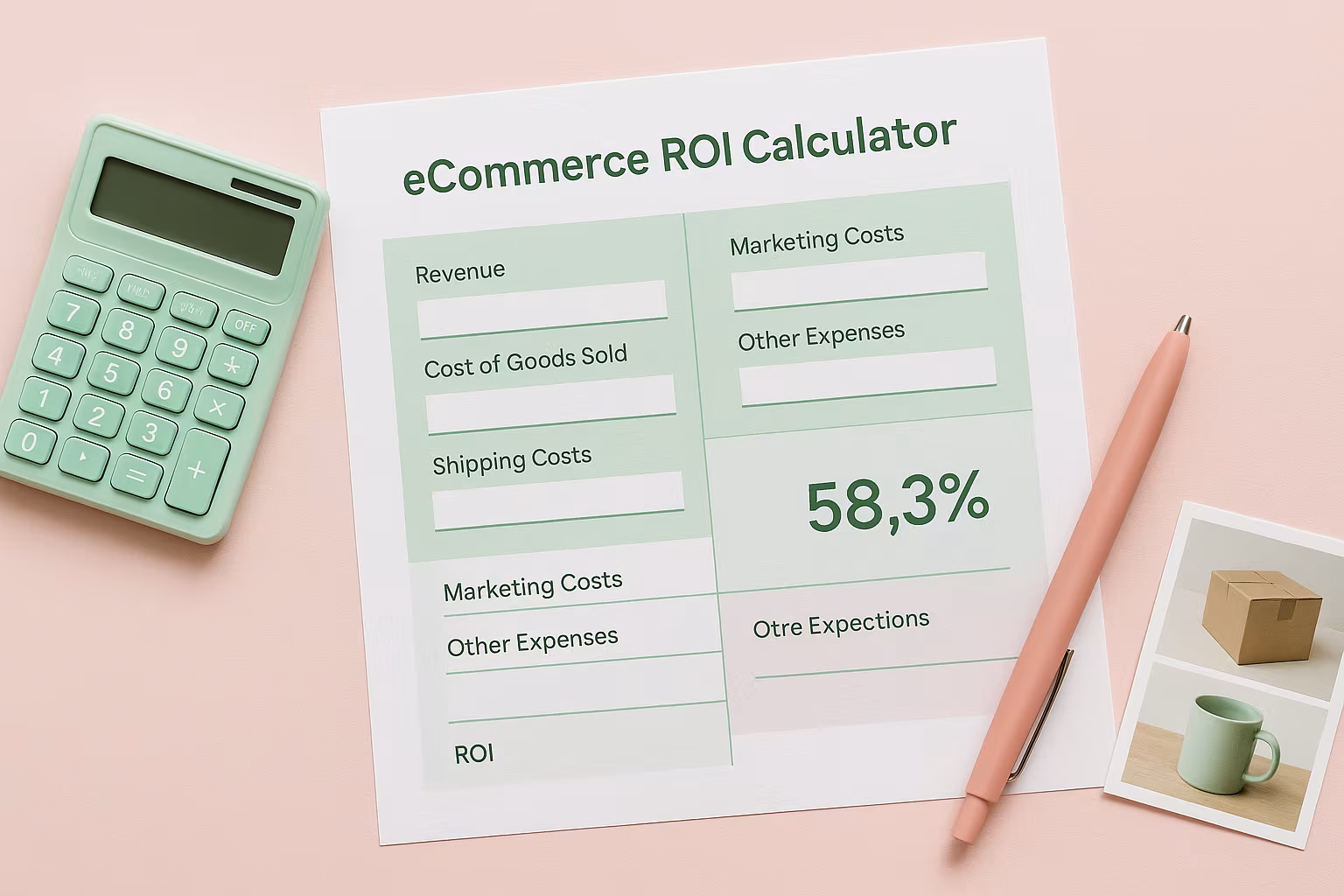
Tracking ROI is one of the most important (yet often overlooked) parts of running a successful ecommerce business. Without knowing exactly how much return you're getting from your marketing and operational spend, it's nearly impossible to scale profitably.
That’s where the Ecommerce ROI Calculator comes in - designed specifically for online sellers and dropshippers, this tool gives you instant clarity on what’s working, what’s not, and how to make data-backed decisions to drive real growth.
Key Inputs That Drive Real Ecommerce ROI
Most calculators oversimplify. This Ecommerce ROI Calculator was built to reflect the real-world complexity of modern ecommerce. Here’s how it mirrors real operational inputs:
Product Cost and Fulfillment
These are your non-negotiable base costs. That includes manufacturing, kitting, and pick-and-pack, not just raw COGS.
Pro tip: If you’re bundling products, factor in volume discounts and per-unit packaging costs like inserts or labeling fees. Your ROI is only as accurate as the inputs.
Platform & Payment Fees
Shopify, Stripe, PayPal — they all take their cut. This tool bakes in platform and transaction fees (e.g., 2.9% + $0.30/order) so you know your real profit after fees, not just your revenue.
Even premium apps can erode margins if you’re not tracking them.
Ad Spend and Conversion Rate
This is where most sellers lose ROI without realizing it. You might spend $500 on ads and celebrate clicks, but if your conversion rate is 2%, your CAC may be unsustainable.
This calculator connects traffic, conversion, and orders placed so you know exactly how much you're earning on each dollar spent.
Return Rate
Returns quietly eat into profits, especially for health, beauty, or apparel categories. Sellers from a private labeling platform need to factor in product satisfaction, shipping errors, or seasonal return spikes. The calculator subtracts lost revenue from expected returns so you aren’t misled by top-line revenue.
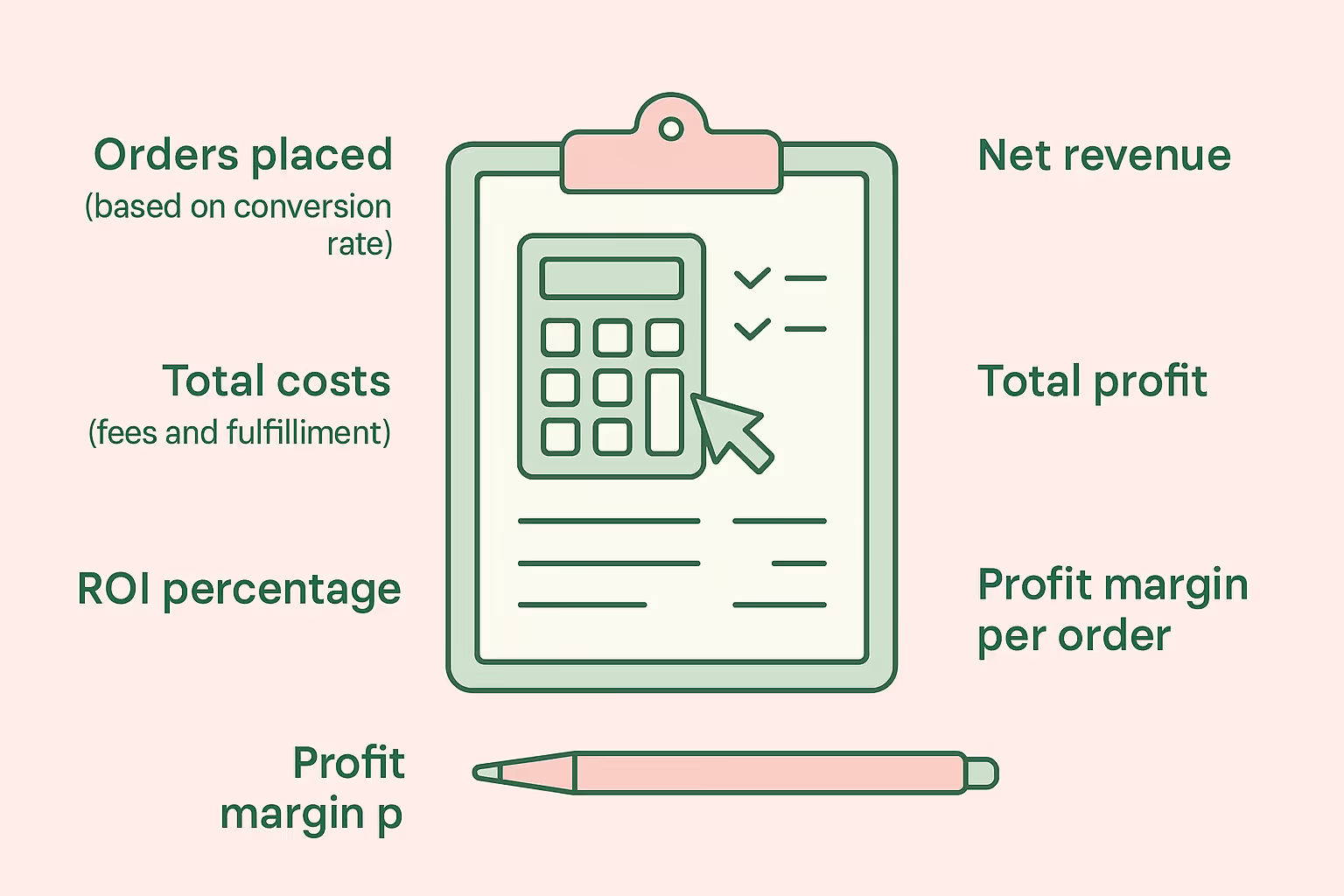
Plug-and-Play Tool for ROI Clarity
The tool is straightforward but surprisingly powerful. With a few inputs, like product cost, shipping, ad spend, and visitor conversion rate, you get detailed insights into:
- Orders placed (based on conversion rate and traffic)
- Net revenue
- Total costs (with platform fees and fulfillment included)
- Total profit
- ROI percentage
- Profit margin per order
Everything is built for real-world scenarios where variables shift constantly. It’s ideal for testing pricing models, validating new SKUs, or adjusting spend during Q4 and high-traffic campaigns.
Example: How the ROI Calculator Sharpens Strategy
To see the ecommerce ROI calculator in action, let’s break down a real-world scenario using a popular product type.
This example highlights how each input, product cost, ad spend, conversion rate, and more, directly influences overall profitability. It also shows how even small adjustments can lead to significant improvements in ROI and margins.
- Selling Price: $49
- Product Cost: $18
- Fulfillment & Shipping: $6
- Platform Fees: 5%
- Ad Spend: $500
- Expected Visitors: 1500
- Conversion Rate: 3%
- Return Rate: 8%
After plugging those values in, the calculator returns:
- 45 orders placed
- $2,205 net revenue
- $1,866.65 total cost
- $338.35 profit
- 18.13% ROI
- 15.34% profit margin
The insights here are clear. Despite a solid selling price, platform and marketing costs chip away heavily. Any change, say, a bump to 4% conversion or negotiating a lower fulfillment fee, could improve profit by 30% or more.
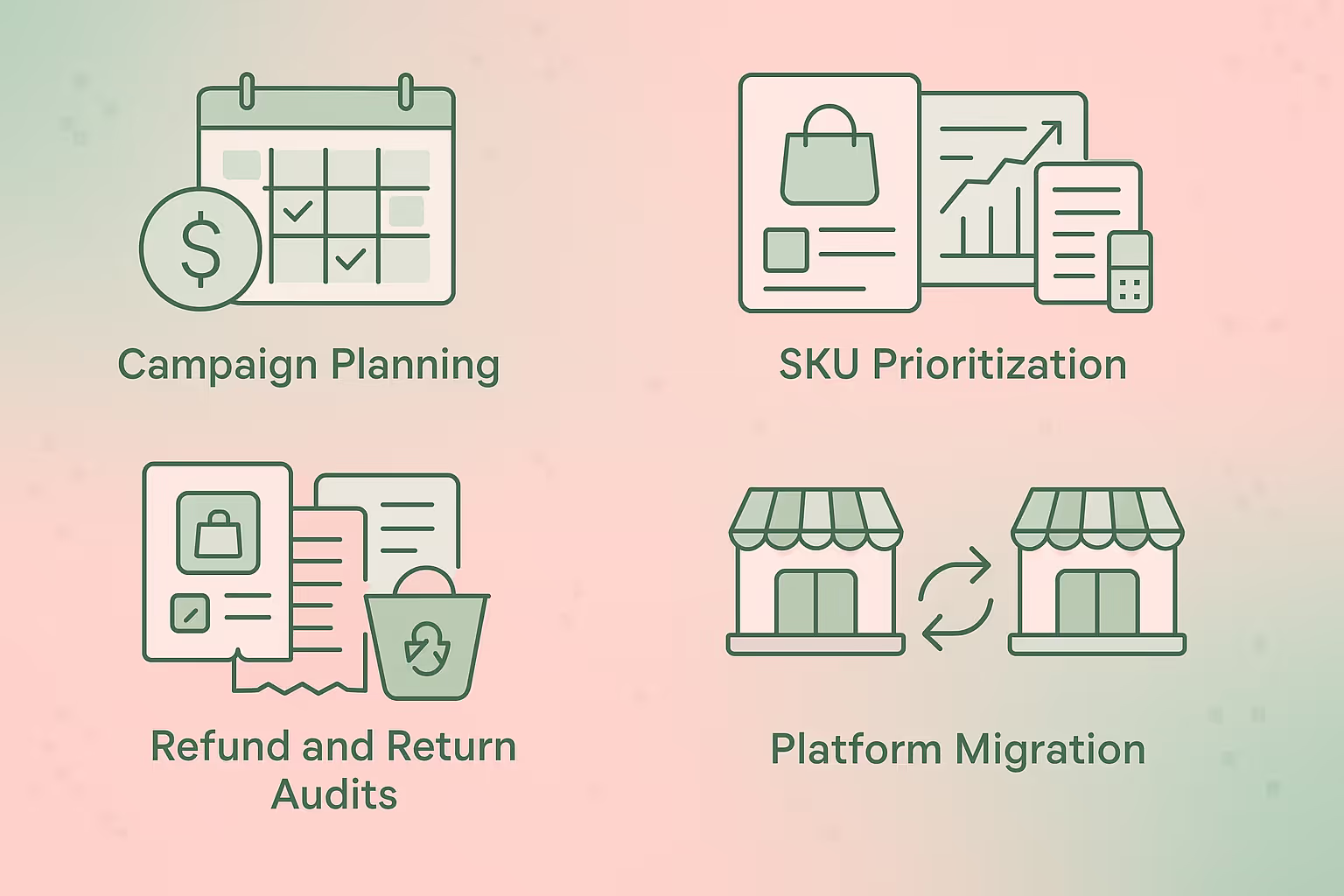
Smarter Use Cases Beyond Just Pricing
This calculator isn’t just for pre-launch modeling. Veteran ecommerce sellers use it in multiple scenarios to sharpen operations:
Campaign Planning
Estimate expected ROI before you sink $2K into Meta ads. Know how many sales you need to break even, and at what AOV.
SKU Prioritization
Quickly compare the profit margins of multiple products to decide which ones deserve top placement or ad budget.
Refund & Return Audits
Use real return data to calculate how it’s affecting your bottom line, and whether a policy tweak could help.
Platform Migration
Switching from Etsy to Shopify? This helps you compare platform fee structures and see how they impact margin.
Strategic Levers to Improve Your ROI
Once you've run the numbers through the ecommerce profit calculator, the next step is knowing how to optimize your metrics. For private label sellers in the e-commerce or dropshipping space, there are five levers that most directly affect profit and ROI.
Each lever isn’t just a metric; it’s a decision-making zone that sellers can actively control, test, and improve.
1. Increase Conversion Efficiency
Improving your site’s conversion rate has a compounding effect on ROI. More conversions from the same traffic mean a lower cost per acquisition and higher revenue per dollar spent on ads.
Tips:
- Test simplified product pages with a clearer CTA
- Offer social proof (e.g., reviews, trust badges, before/after photos)
- Use quantity breaks or bundles to raise average order value (AOV)
Even moving from 2.5% to 4% conversion can double ROI without increasing ad spend.
2. Lower Your Fulfillment Overhead
Fullment costs include picking, packing, kitting, and labeling. These costs can vary based on packaging choices, weight tiers, and SKUs per order.
Opportunities to optimize:
- Consolidate SKUs into kits or bundles
- Choose lighter, DIM-friendly packaging
- Standardize fulfillment requirements to speed up handling
Evaluate which SKUs cost more to fulfill than they earn, and revise or remove them.
3. Refine Ad Spend Allocation
Advertising is where ecommerce profitability often bleeds. Using the calculator helps identify when your ad strategy isn’t sustainable.
What to test:
- Reallocate spend from cold to retargeting campaigns
- Pause low-converting platforms (e.g., if TikTok CPC is low but the conversion rate is even lower)
- Use cost-per-click and conversion data to set CAC targets by product
Instead of cutting spend, optimize spend per SKU based on actual ROI performance.
4. Monitor and Reduce Return Rates
Returns are often excluded from early profit models, but in reality, they’re a margin killer. Especially in beauty, wellness, and apparel, returns should be treated like a direct expense.
Smart ways to reduce returns:
- Add detailed sizing, usage, or ingredient guides
- Offer pre-purchase support (chatbots, FAQs, etc.)
- Implement quality control reviews of top-returned SKUs
Build the return rate into your calculator inputs and track changes over time.
5. Revisit Your Pricing Power
Many sellers underprice out of fear, not strategy. Use the calculator to test new price points and see how even a $3–$5 increase affects profit margin, even accounting for a slight drop in conversion.
Scenario testing with the calculator can help:
- Identify “break-even” pricing thresholds
- Determine price elasticity per product
- Build pricing tiers for B2B or bulk buyers
Sometimes, increasing price is the most straightforward way to double profit, without touching your costs.
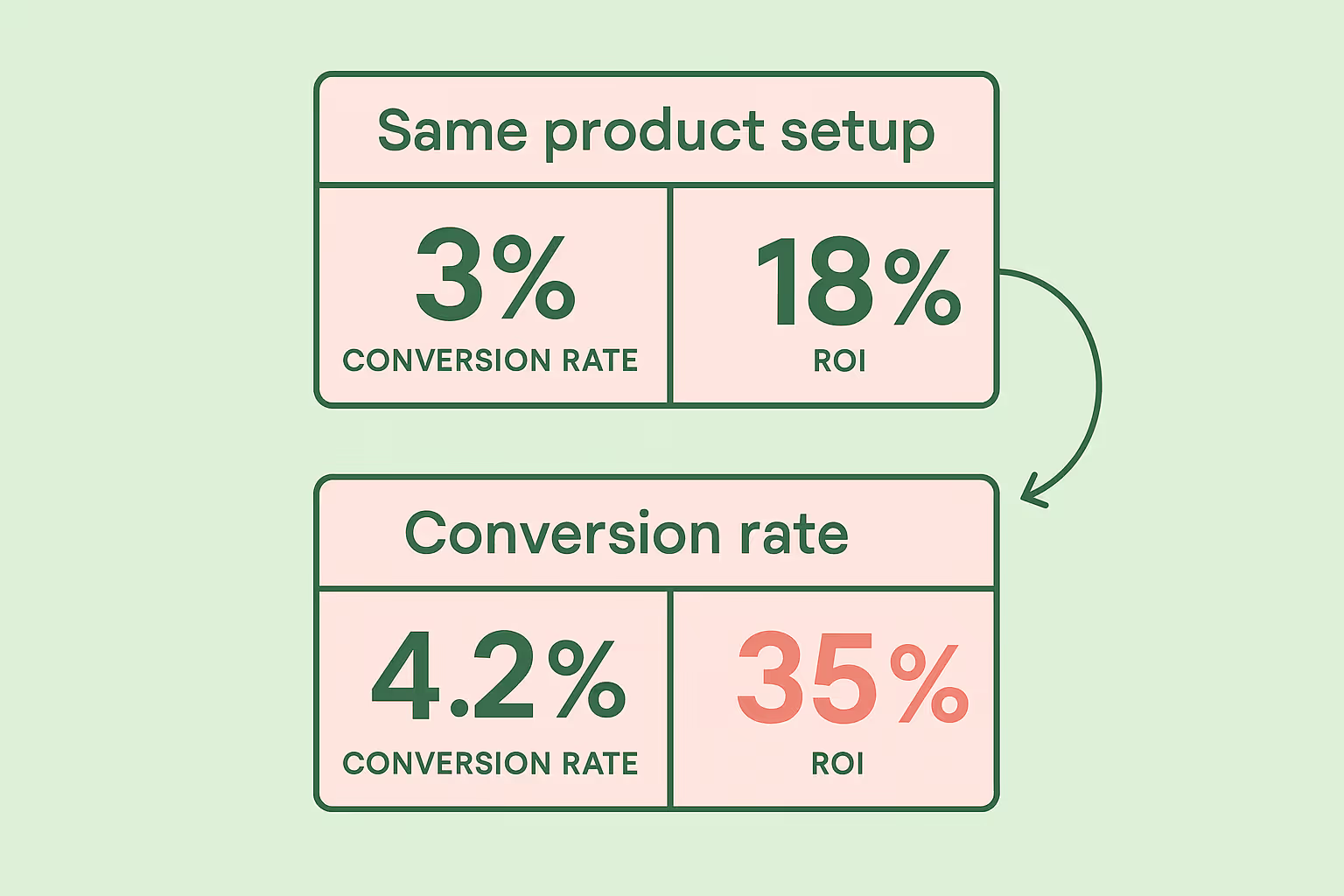
Insider’s Edge: Reverse-Engineer Your Ideal Conversion Rate
Want to really squeeze value from this calculator? Use it in reverse. Instead of inputting your actual conversion rate, test different ones to find out what conversion rate would be needed to hit a target ROI, say, 25%.
Then optimize your landing page, pricing, and offer stack until you hit that number.
Example:
With the same product setup, increasing conversion from 3% to 4.2% boosts ROI from 18% to 35%. No need to increase ad spend, just better optimize your site experience.
Start Calculating and Take Control of Your Margins
Whether you’re launching your first SKU or scaling a multi-product brand, profit clarity should be non-negotiable. Tools like this ecommerce ROI calculator turn vague assumptions into concrete strategies.
Use it before launching new SKUs, adjusting pricing, or doubling down on campaigns. Then revisit it monthly to refine and adapt.
Your margins will thank you.
FAQ
Related blogs
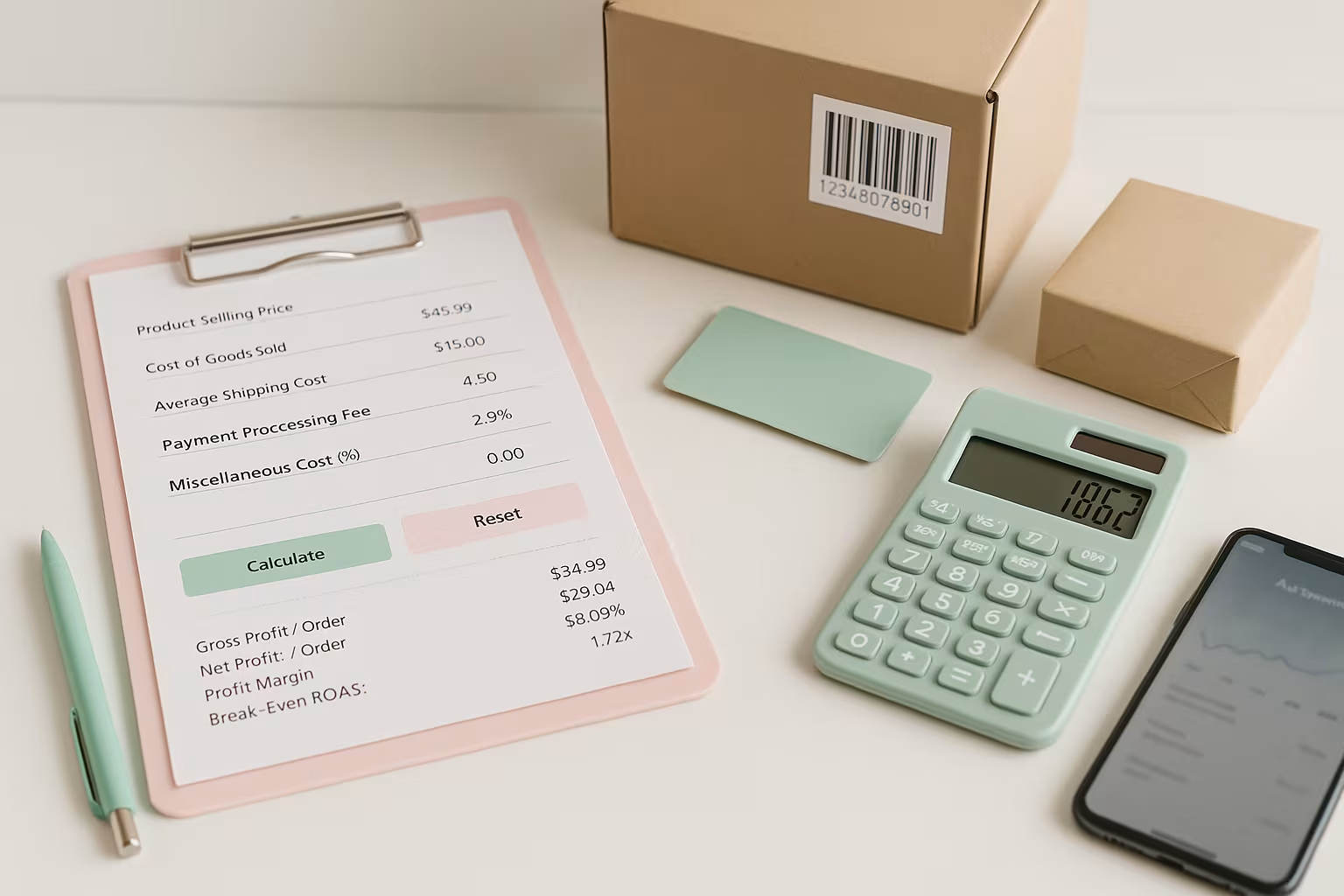
Break-Even ROAS Calculator: Find Out What You Can Afford to Spend on Ads

Customer Lifetime Value Calculator: Unlock Your E-commerce Revenue Potential
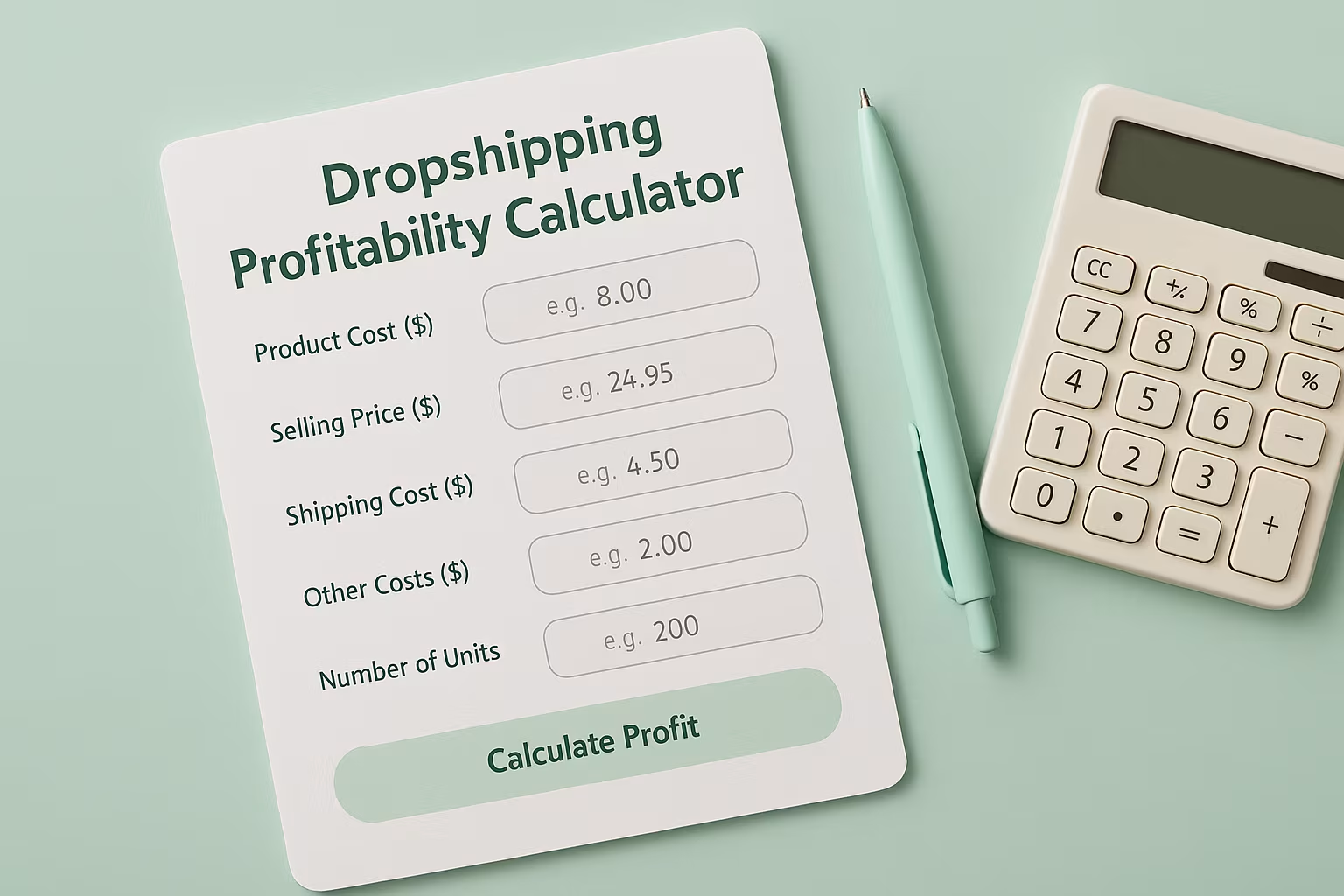
Dropshipping Profitability Calculator: Instantly Reveal Your Earnings
